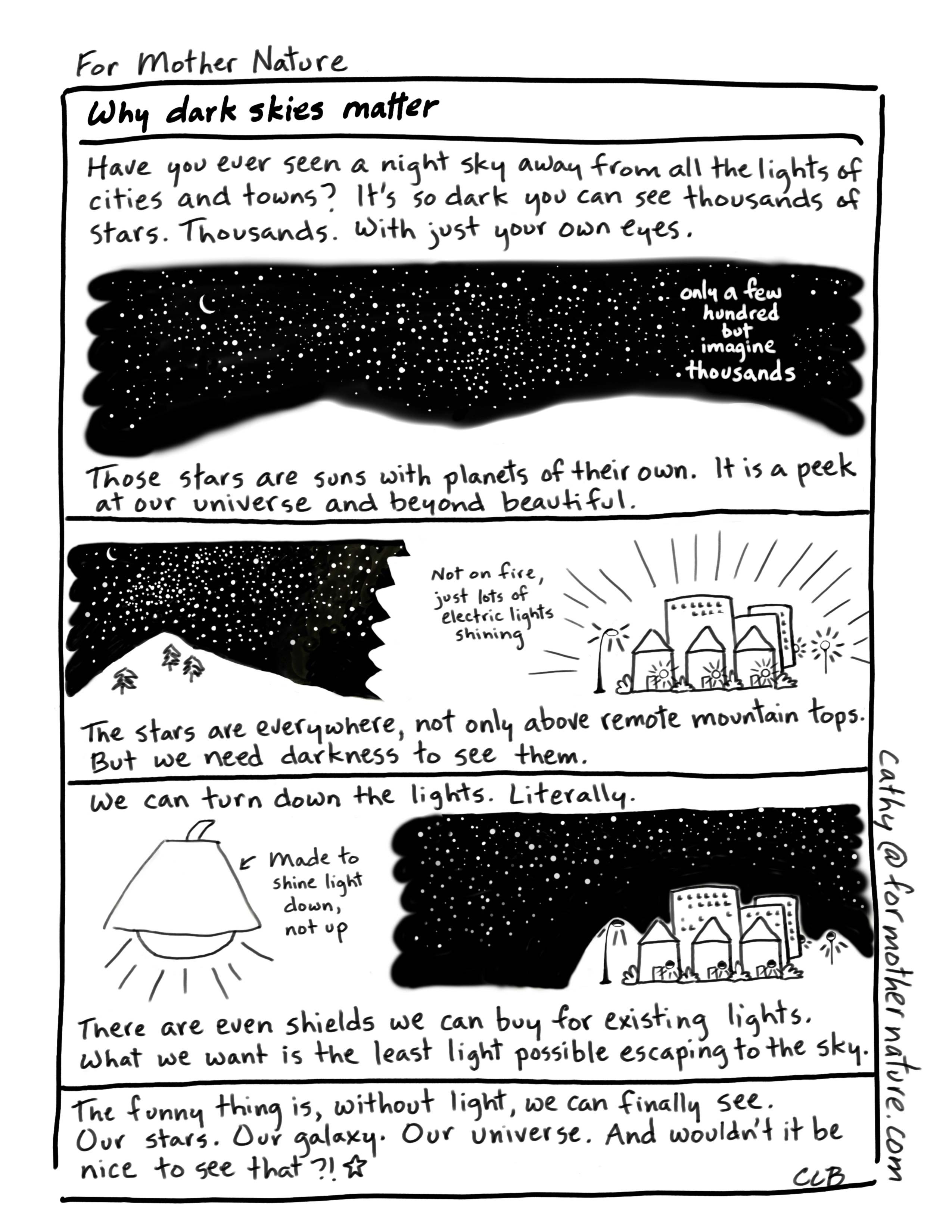
Interested in knowing more?
- We are not the only ones who benefit from dark skies at night. Wildlife have the light of day and the dark of night built into their life rhythms. When we light up the night, it messes with them in ways we rarely consider. One example is birds that migrate at night, who are attracted to our artificial lights and collide with buildings (and die).
- Don't go overboard on the outside wattage: Use incandescent bulbs of 60 watts or less and LED bulbs of 15 watts or less. You are not doing surgery out there, a little light goes a long way.
- No need for floodlights, but if you disagree, at least put a timer on any floodlights and aim them down, not up.
- Use a motion sensor for security lights. They will provide lighting when needed and alert you to movements outside.
- Work with your city council to raise awareness and to create lighting ordinances.
For photos of what our skies really look like when the lights are off and for more information about bringing back dark skies:
- Click here for the article "This Is How To Bring Dark Skies Back In An Increasingly Developed World" by Ethan Siegel in Forbes that goes into more depth about light pollution and what can be done about it.
- You can also learn more about light pollution and what you can do as a individual and as part of a community at the International Dark-Sky Association.
- Both of these sources have photos that make it clear what our skies really look like without the glare of artificial light. You will be in awe.
